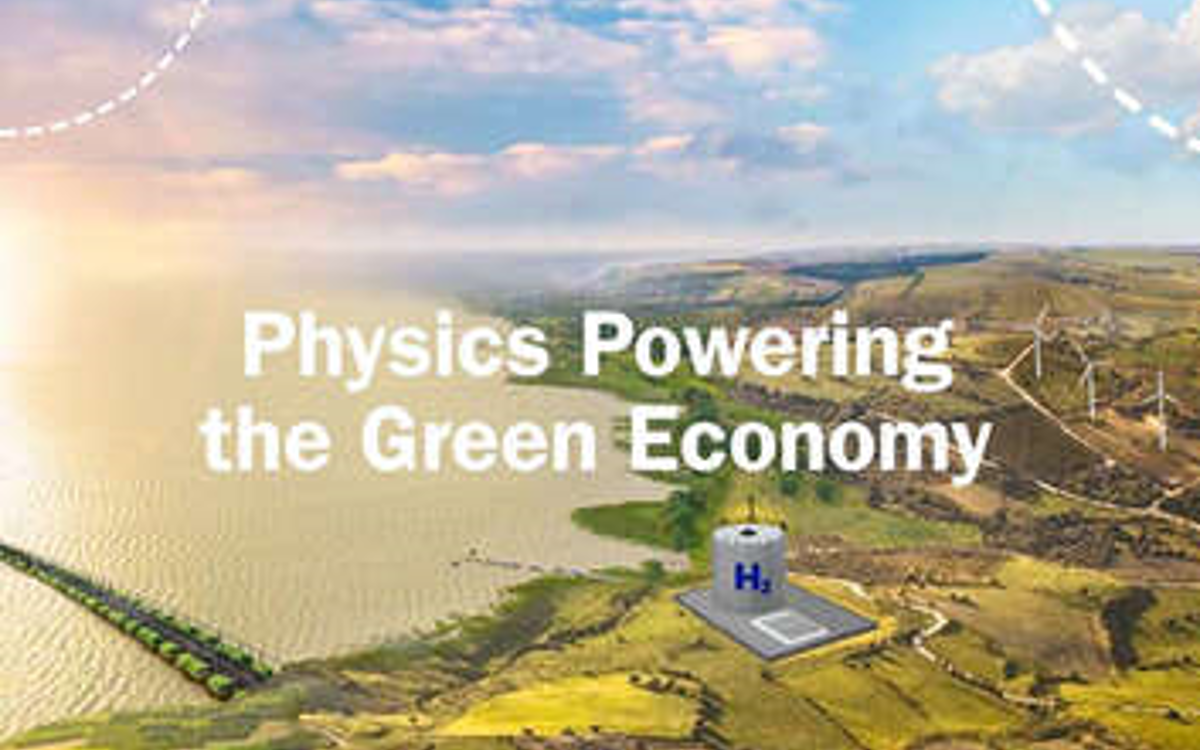
National Composites Centre featured in IOP's Physics Powering the Green Economy
The National Composites Centre’s efforts towards materials development for hydrogen storage has been featured in the Institute of Physics (IOP)’s report, Physics Powering the Green Economy. The report sets out the central role that physics innovation and physicists have played in realising the green economy of today, and the equally key part they will need to play in scaling up a sustainable, internationally competitive green economy in the UK and Ireland for the future – in particular as a ‘systems challenge’ how the skills that physicists have, and their way of thinking, is important in solving such a problem.
According to the report, targeted support for physics R&D, and business innovation, as part of a long-term systems approach to leadership, coordination and delivery to unlock more of the contribution physics can make, is vital to realising a thriving green economy in the UK and Ireland.
Here’s an extract featuring the NCC’s case study:
Materials Development for Hydrogen Storage
The National Composites Centre is a world-leading research and development facility that convenes innovators and provides the expertise needed to pull through technology research to industrial application.
Hydrogen is set to play a pivotal role in our future energy mix. Low-carbon hydrogen could decarbonise high-energy transportation such as HGVs and aircraft, and energy-intensive industries. Key to unlocking this potential are high-performing and sustainable hydrogen storage solutions.
Liquid hydrogen (LH2) requires well-insulated cryogenic storage vessels to maintain it at a temperature of -253°C. As metallic tanks are relatively heavy, the use of composite tanks for storing LH2 offers substantial benefits. Composites are lightweight, strong and durable, with significant design flexibility, so offer an ideal solution to storing compressed hydrogen.
The NCC is exploring innovation in the design and development of hydrogen pressure vessels, pipes and cryogenic tanks. This includes a UK-based composite cryogenic storage tank programme that will validate and accelerate design, manufacture and test capabilities, starting with a linerless carbon fibre tank for storing LH2.
Hydrogen-powered aircraft are due to come into service in the mid-2030s. However, with no clear existing industry standards for aerospace cryogenic tanks, the ability to analyse a range of designs is essential. NCC has developed design concepting tools that can be used for cryogenic tank projects, enabling detailed design and manufacturing risk identification and analysis.
Testing is another crucial part of cryogenic tank development that requires specialist knowledge, innovation and facilities. Working with Filton Systems Engineering (FSE), the NCC has developed a tank-testing programme that uses an LH2 vacuum test chamber and cryo-rated testing instrumentation.
According to Dr Joanna Dally, Strategic Partnerships Director, National Composites Centre:
“Governments around the world have been developing strategies to harness the potential of low-carbon hydrogen as part of a sustainable energy system. The UK is no exception, investing in technology development to decarbonise industry, power and transport. The cross-sector capability that we have developed at the NCC positions the UK to secure future commercial competitiveness, and puts us at the forefront of advanced engineering expertise in composite cryogenic storage.“
To learn more, download the full report.
Explore the interactive dashboards that give access to data included in the physics powering the green economy report, and further relevant data sets.

